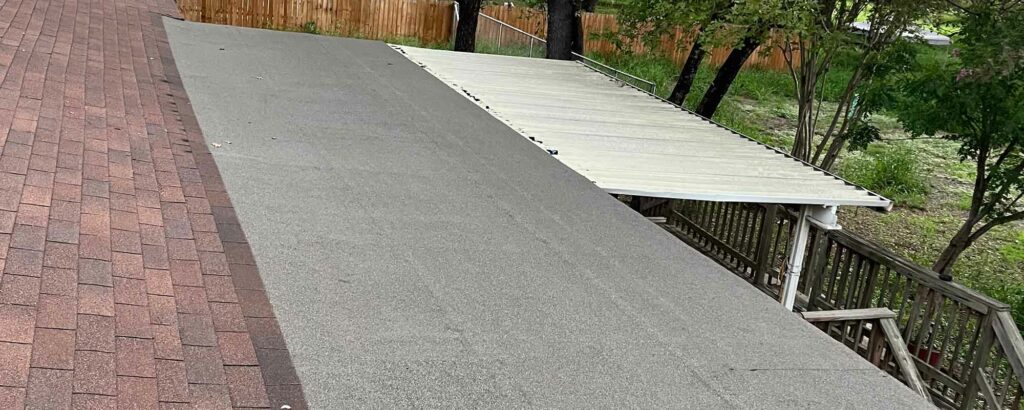Roofing 101: What is Roll Roofing and Why Should You Know?
Roll roofing, also known as continuous or seamless roofing, is a type of roofing material that is manufactured in a roll form. Roll roofing is made using one long sheet of lightweight coating material. This type of roofing is typically less expensive than other types of residential roofs such as tile roofs, metal roofs, and concrete tiles. It’s also easier to install than other common materials for the home. There are two main types of roll roofing: Single-ply and double-ply. Each has its own advantages and disadvantages based on where you live and what the climate conditions are like where you live.
What is Roll Roofing?
Roll roofing is a type of roofing material that is manufactured in a roll form. Roll roofing is made using one long sheet of lightweight coating material. This type of roofing is typically less expensive than other types of residential roofs such as tile roofs, metal roofs, and concrete tiles. It’s also easier to install than other common materials for the home. Roll roofing is designed to be applied directly to the top of the roof deck, which is the surface that is atttached to the structure of your roof. This installation method is called “on-deck.” Although roll roofing can be used on new construction and re-roofing projects, it is typically used only in applications where the slope of the roof is less than 2/12. Roll roofing is generally torched down or self-adhered.
Single-ply Roll Roofing
Single-ply or single-layer roll roofing is made from one layer of material. This type of material is generally less expensive than double-ply roofing. It is also lighter in weight. The lighter-weight single-ply roofing can be installed by hand with a little bit of training. Single-ply roofing is most often used in cooler climates with low rainfall amounts. Single-ply roofing is generally more vulnerable to wear and tear than double-ply roll roofing. It will typically last between 12 and 20 years, while double-ply roll roofing can last anywhere from 20 to 30 years. Single-ply roofing is often used on low-end construction projects, while double-ply roofing is used on high-end projects.
Double-ply Roll Roofing
Double-ply or double-layer roll roofing is made from two layers of material. It is more expensive than single-ply roofing. However, it is also thicker and heavier, which makes it more durable than single-ply roofing. Double-ply roofing is ideal for use in areas with higher rainfall amounts and higher temperatures. Double-ply roofing will last between 20 and 30 years, making it an excellent long-term roofing solution for many homeowners. Having a roof that lasts that long means you won’t have to make repairs to your roof as often. You’ll also see lower utility bills as a result of proper roof installation.
Benefits of Roll Roofing
– Good Looks – Roofing roll material comes in a wide range of colors and designs. Your roof can be made to look attractive and decorative. – Long Lasting – Roofing roll material is very durable. Once installed, it should last 15 to 20 years or more. Once you’ve used roll roofing, you won’t have to worry about re-roofing your home for a long time. – Resistant to Damage – Roofing roll material is resistant to wind, hail, and tornadoes. It is also resistant to the sun and ultraviolet rays, which means it won’t fade or discolor over time. – Easy to Install – Roofing roll material is lightweight. This makes it easy to carry and handle. It is also easy to install, making it a great choice for DIYers. – Environmentally Friendly – Roofing roll material is made from synthetic materials, which are more environmentally friendly than natural materials.
Drawbacks of Roll Roofing
– Prone to Damage – Like any material, roofing roll is susceptible to damage from extreme weather conditions. Particular attention should be paid to keeping your roof covered during inclement weather. – Limited Lifespan – Roofing roll material has a limited lifespan, just like all other roofing materials. The lifespan is dependent on the type of roofing roll being used and the environment where it is installed. – Lowest End Choice – Roofing roll material is the lowest end choice of roofing materials. It is more affordable than other options, but it also offers less durability and protection against extreme weather conditions.
When is roll roofing the best option?
If you’re on a tight budget, roll roofing is one of the best options. The material is generally the least expensive out of all of the popular roofing options. If you’re in a region with extreme weather conditions, you’ll want to choose a heavier thickness of material that is more durable. If you’re in a region with milder weather conditions, a lighter thickness of the material will do the job just fine. Roll roofing is a great choice for new or re-roofing projects, DIYers, and homeowners who want something inexpensive and durable.
Conclusion
Roofing roll material can be the least expensive option for roofing a home. It is made from synthetic materials and is resistant to extreme weather conditions. Roofing roll material is durable, easy to install, and lasts a long time. If you’re on a tight budget, roll roofing is one of the best options. The material is generally the least expensive out of all of the popular roofing options. If you’re in a region with extreme weather conditions, you’ll want to choose a heavier thickness of material that is more durable. If you’re in a region with milder weather conditions, a lighter thickness of material will do the job just fine.
